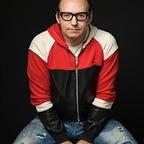Halloween Blackface
To the 40% of white Americans who still think it’s okay
Halloween celebrations began some 2,000 years ago in Celtic-speaking countries and are traced to the ancient holiday of Samhain. According to the myth, it’s when the Lord of the Dead rides across the land with his ghostly hounds.
In 1745, the celebrations became known as Halloween, derived from the Christian “Hallowe’en,” which means “saints’ evening.” It was supposed to be the day when the division between earth and the “otherworld” were eliminated and humans could interact with otherworld creatures.
Later, Scottish, English, and Irish immigrants introduced Halloween to the U.S.
Costumes as a part of the holiday can be traced back to 1585, but back then people would dress up as devils, witches, ghosts, and monsters.
It wasn’t until the 20th century when Halloween and costumes became more commercialized.
And in the U.S., those costumes took a very different turn. Go figure.
White Americans began dressing up as people of other races and ethnicities, often painting their faces black to imitate Black Americans. I’m only 54 and recall some people wearing blackface and “Indian” costumes for Halloween in the 1970s and ’80s.
